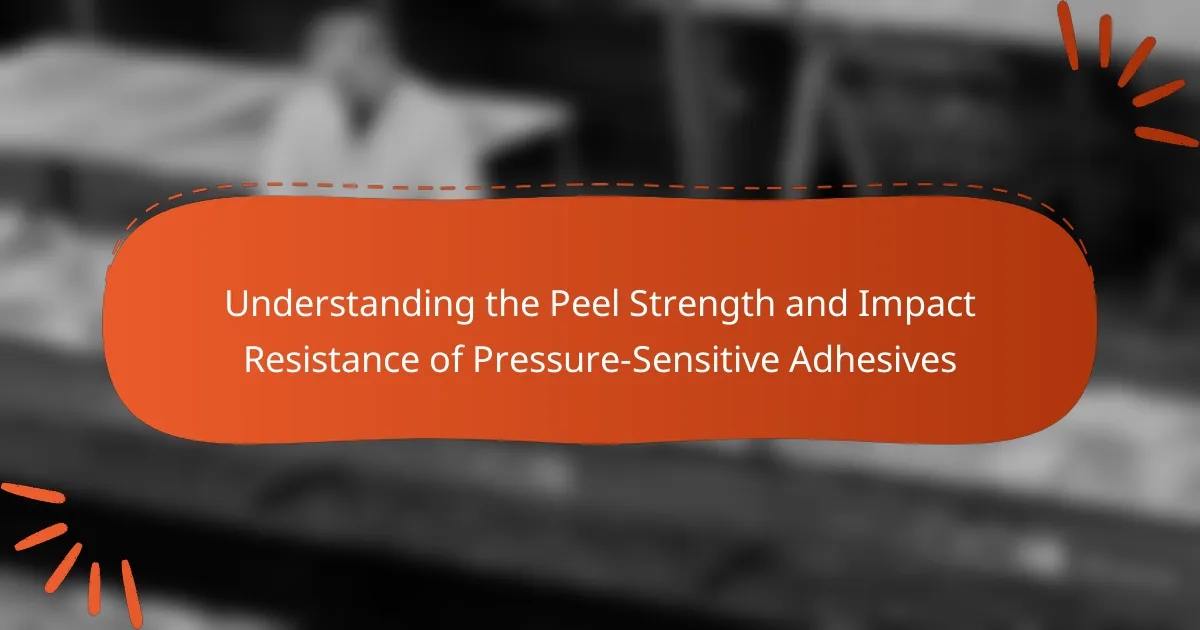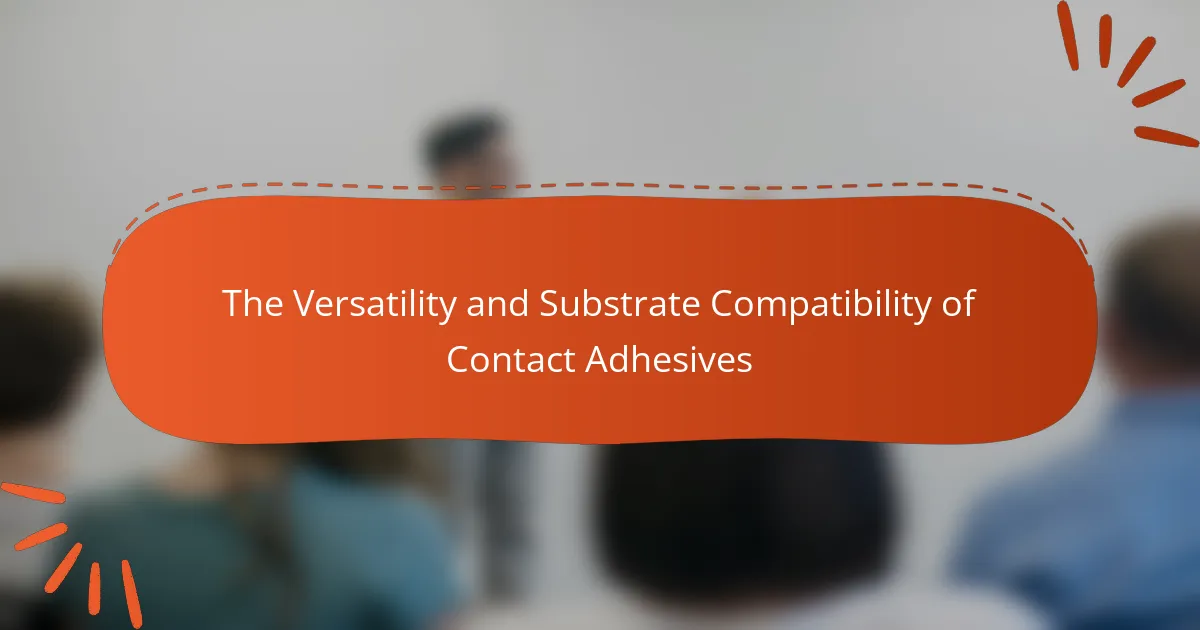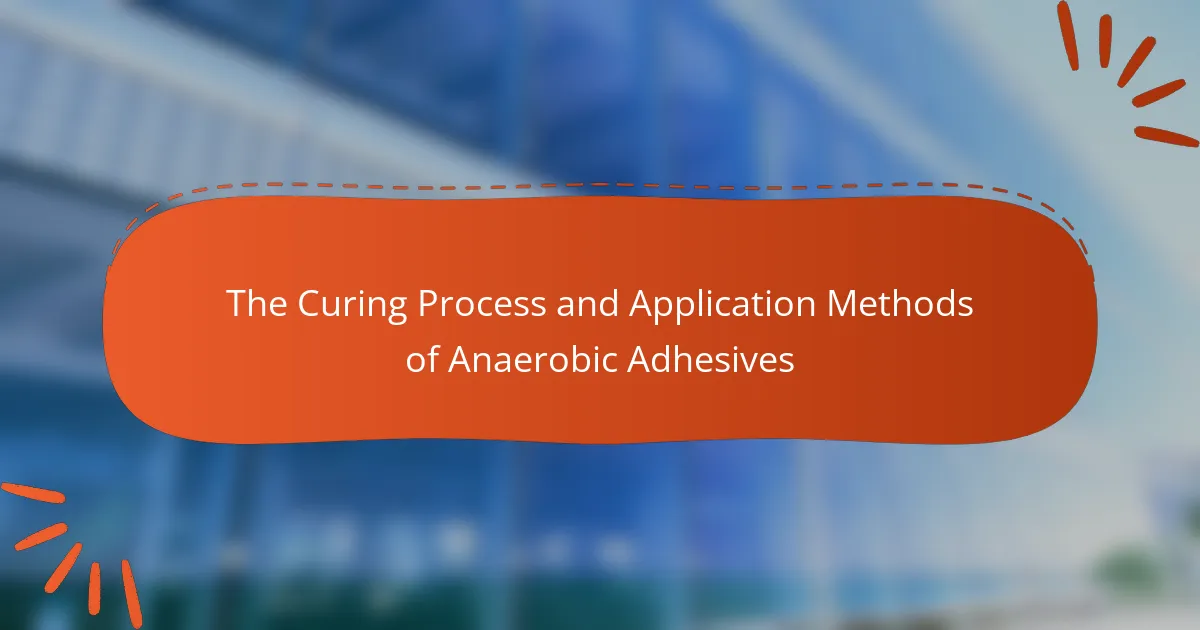Pressure-sensitive adhesives (PSAs) are specialized bonding agents that adhere to surfaces with minimal pressure, eliminating the need for heat or solvents. This article focuses on two critical performance characteristics of PSAs: peel strength and impact resistance. Peel strength measures the force required to detach the adhesive from a substrate, indicating its bonding effectiveness, while impact resistance assesses the adhesive’s ability to withstand sudden forces without failure. Understanding these properties is essential for evaluating the performance of PSAs in various applications, including tapes, labels, and medical uses, ensuring their reliability in diverse industrial contexts.
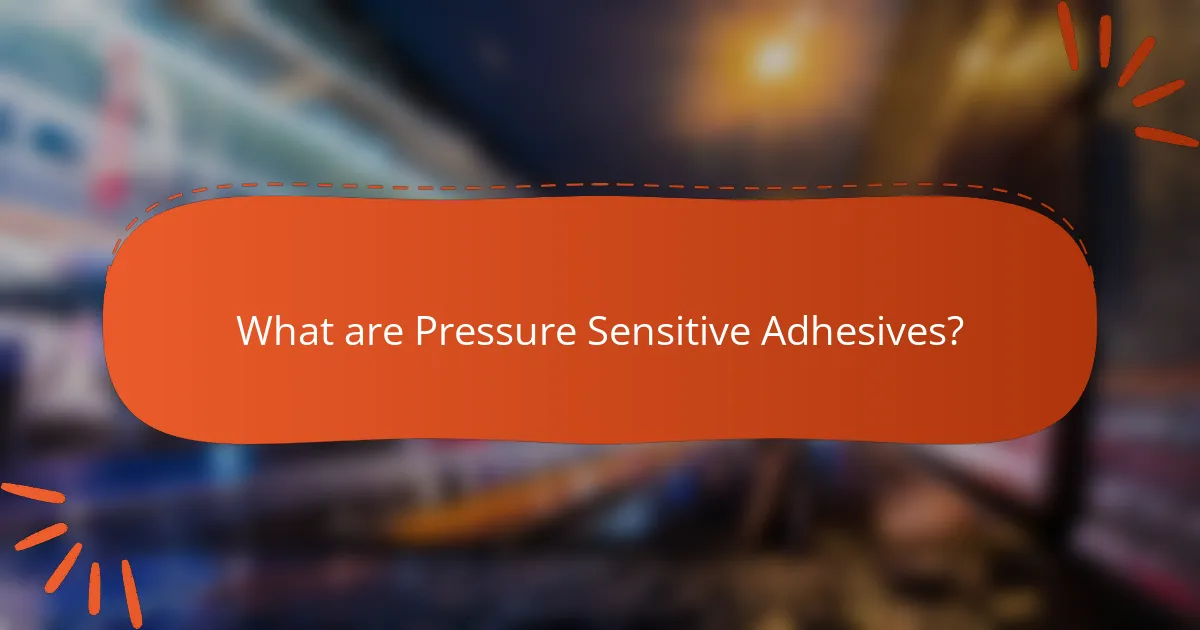
What are Pressure-Sensitive Adhesives?
Pressure-sensitive adhesives (PSAs) are bonding agents that adhere to surfaces with light pressure. They do not require heat or solvents to activate. PSAs are commonly used in tapes, labels, and medical applications. They offer quick and easy application, making them versatile in various industries. The adhesion is achieved through a combination of physical and chemical interactions. PSAs can be formulated for specific performance characteristics, such as peel strength and impact resistance. These properties are essential for their effectiveness in different applications.
How do Pressure-Sensitive Adhesives work?
Pressure-sensitive adhesives (PSAs) work by forming a bond when pressure is applied to the adhesive layer. They do not require heat or solvents to activate. PSAs are typically made from polymer materials that exhibit viscoelastic properties. This allows them to flow and conform to the surface upon contact. When pressure is applied, the adhesive molecules interlock with the surface, creating a strong bond. The bond strength can be influenced by factors such as surface texture and cleanliness. PSAs are designed to maintain adhesion over time while allowing for easy removal without residue. Their effectiveness is often measured by peel strength and impact resistance, which determine how well they adhere under various conditions.
What are the key components of Pressure-Sensitive Adhesives?
The key components of pressure-sensitive adhesives are the polymer backbone, tackifiers, plasticizers, and additives. The polymer backbone provides the primary structure and adhesion properties. Tackifiers enhance the adhesive’s stickiness and improve bonding performance. Plasticizers increase flexibility and reduce brittleness, which helps in maintaining adhesion under varying conditions. Additives may include stabilizers, fillers, and colorants that enhance specific properties like UV resistance or thermal stability. Each component plays a crucial role in determining the adhesive’s overall performance, including peel strength and impact resistance.
How do these components influence adhesive performance?
Components such as polymer type, adhesive formulation, and surface energy significantly influence adhesive performance. Polymer type determines the flexibility and strength of the adhesive bond. For instance, elastomers provide high peel strength, while thermoplastics offer better impact resistance. Adhesive formulation affects viscosity and curing time, which are critical for application and bond formation. Surface energy of the substrates also plays a crucial role; higher energy surfaces enhance adhesion by promoting better wetting. Research indicates that optimizing these components can enhance peel strength and impact resistance in pressure-sensitive adhesives, leading to improved overall performance.
What are the different types of Pressure-Sensitive Adhesives?
The different types of Pressure-Sensitive Adhesives (PSAs) include rubber-based, acrylic-based, and silicone-based adhesives. Rubber-based PSAs offer high initial tack and are commonly used in tape applications. Acrylic-based PSAs provide excellent UV resistance and are suitable for outdoor use. Silicone-based PSAs withstand extreme temperatures and are often used in medical applications. Each type has unique properties that make it suitable for specific applications. For instance, rubber-based adhesives are favored for their quick bonding capabilities. Acrylic adhesives are preferred for their durability and longevity. Silicone adhesives are ideal for environments that experience temperature fluctuations.
What are the characteristics of acrylic-based Pressure-Sensitive Adhesives?
Acrylic-based Pressure-Sensitive Adhesives (PSAs) are known for their excellent adhesion properties. They exhibit strong bonding capabilities on various substrates. These adhesives maintain their performance across a wide temperature range. They offer good resistance to UV light and weathering. Acrylic PSAs are also characterized by their clarity and ability to remain flexible over time. Additionally, they demonstrate low residue upon removal. Their formulation can be tailored for specific applications, enhancing versatility. The effectiveness of acrylic-based PSAs is supported by their widespread use in industries such as automotive and electronics.
How do rubber-based Pressure-Sensitive Adhesives differ from others?
Rubber-based Pressure-Sensitive Adhesives (PSAs) differ from others primarily in their formulation and performance characteristics. These adhesives utilize rubber polymers, which provide excellent flexibility and conformability. They exhibit high initial tack and good adhesion to a variety of substrates. This allows them to maintain strong bonds even under dynamic conditions. In contrast, other PSAs, such as acrylic-based adhesives, may offer better UV resistance and thermal stability but lack the same level of immediate stickiness. Rubber-based PSAs are particularly effective for applications requiring quick bonding and repositionability. Their performance is often quantified by peel strength measurements, which typically show higher values compared to non-rubber alternatives. This makes them suitable for a wide range of applications, including packaging and automotive industries.
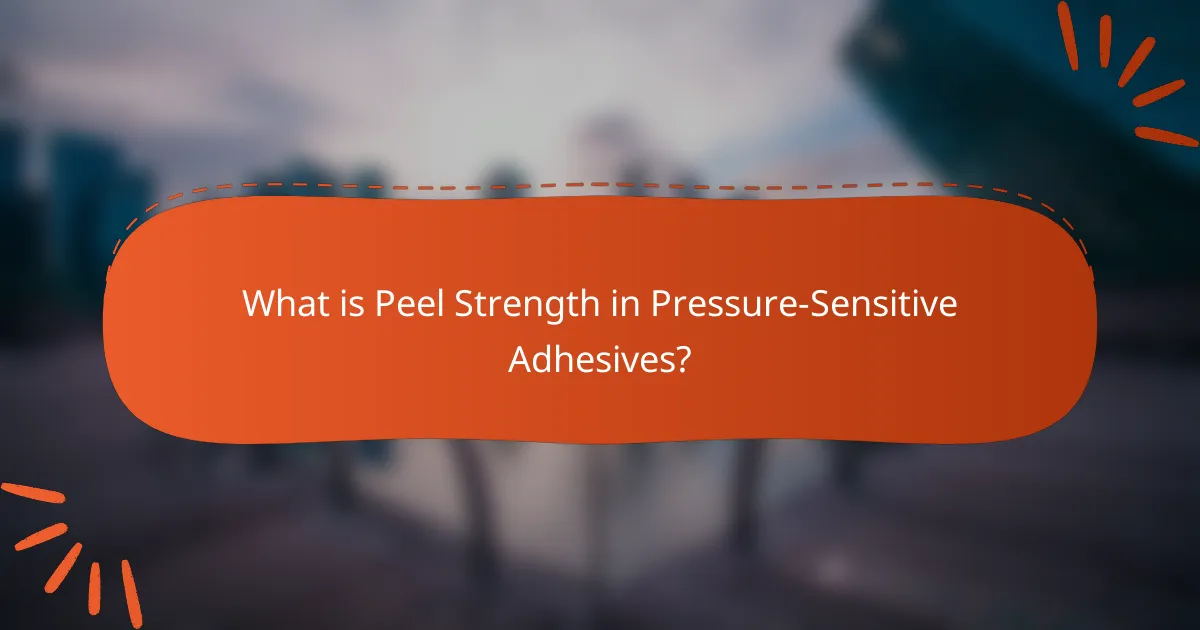
What is Peel Strength in Pressure-Sensitive Adhesives?
Peel strength in pressure-sensitive adhesives refers to the force required to separate the adhesive from a substrate. It is a critical measure of an adhesive’s performance. Peel strength is typically expressed in units such as pounds per inch (lb/in) or Newtons per meter (N/m). This property indicates how well the adhesive bonds to surfaces under peeling conditions. High peel strength signifies a strong bond, while low peel strength indicates a weaker attachment. Testing for peel strength often involves standardized methods, such as ASTM D903. These tests provide quantifiable data on the adhesive’s effectiveness in real-world applications.
How is Peel Strength measured?
Peel strength is measured using a standardized test method that quantifies the force required to separate two bonded materials. The most common method involves applying a constant rate of separation between the adhesive and the substrate. This test typically uses a tensile testing machine to pull the materials apart at a specified angle, often 90 degrees or 180 degrees. The force exerted during the separation is recorded and expressed in units such as pounds per inch (lb/in) or Newtons per meter (N/m). The results indicate the adhesive’s performance and reliability in real-world applications. Standard testing methods include ASTM D903 and ISO 29862, which provide guidelines for consistent and reproducible measurements.
What equipment is used to test Peel Strength?
Peel strength is tested using a peel testing machine. This equipment applies a controlled force to separate two bonded surfaces. It measures the force required to peel one material away from another at a specified angle. Common configurations include 90-degree and 180-degree peel tests. The machine records the force over the length of the test. This data helps determine the adhesive’s performance. Various standards, such as ASTM D903, outline specific testing procedures. Accurate results are crucial for evaluating adhesive effectiveness.
What factors influence the Peel Strength of Pressure-Sensitive Adhesives?
The peel strength of pressure-sensitive adhesives is influenced by several key factors. These factors include the type of adhesive used, the surface energy of the substrate, and the adhesive’s formulation. The adhesive type affects its cohesive and adhesive properties. Higher surface energy substrates typically yield better adhesion. Additionally, the formulation, including additives and fillers, can enhance or reduce peel strength. Environmental conditions such as temperature and humidity also play a significant role. For instance, increased temperature can lead to lower peel strength due to softening of the adhesive. Research indicates that these factors collectively determine the effectiveness of pressure-sensitive adhesives in various applications.
Why is Peel Strength important?
Peel strength is important because it measures the adhesive’s ability to resist separation from a substrate. High peel strength indicates strong bonding, ensuring durability in applications. This characteristic is crucial for products like tapes and labels, where reliable adhesion is essential. For instance, automotive and aerospace industries require adhesives with high peel strength to withstand environmental stressors. Research shows that adhesives with adequate peel strength can reduce product failure rates significantly. Thus, understanding peel strength is vital for selecting the right adhesive for specific applications.
How does Peel Strength affect product performance?
Peel strength directly affects product performance by determining the adhesive’s ability to resist separation from a substrate. High peel strength ensures that the adhesive maintains a strong bond under stress. This is crucial in applications where the adhesive faces dynamic loads or environmental factors. For instance, in automotive applications, strong peel strength can prevent failures during vibrations and temperature changes. Research indicates that adhesives with a peel strength of over 15 N/25 mm are optimal for many industrial uses. Thus, adequate peel strength is essential for ensuring durability and reliability in adhesive applications.
What industries rely on Peel Strength metrics?
The industries that rely on Peel Strength metrics include packaging, automotive, electronics, and construction. Packaging companies use peel strength to ensure adhesive bonds in labels and seals. Automotive manufacturers assess peel strength for bonding materials in vehicles. Electronics firms evaluate peel strength for components like screens and circuit boards. Construction industries utilize peel strength to measure adhesive performance in building materials. Each of these industries requires precise measurements to maintain quality and safety standards.
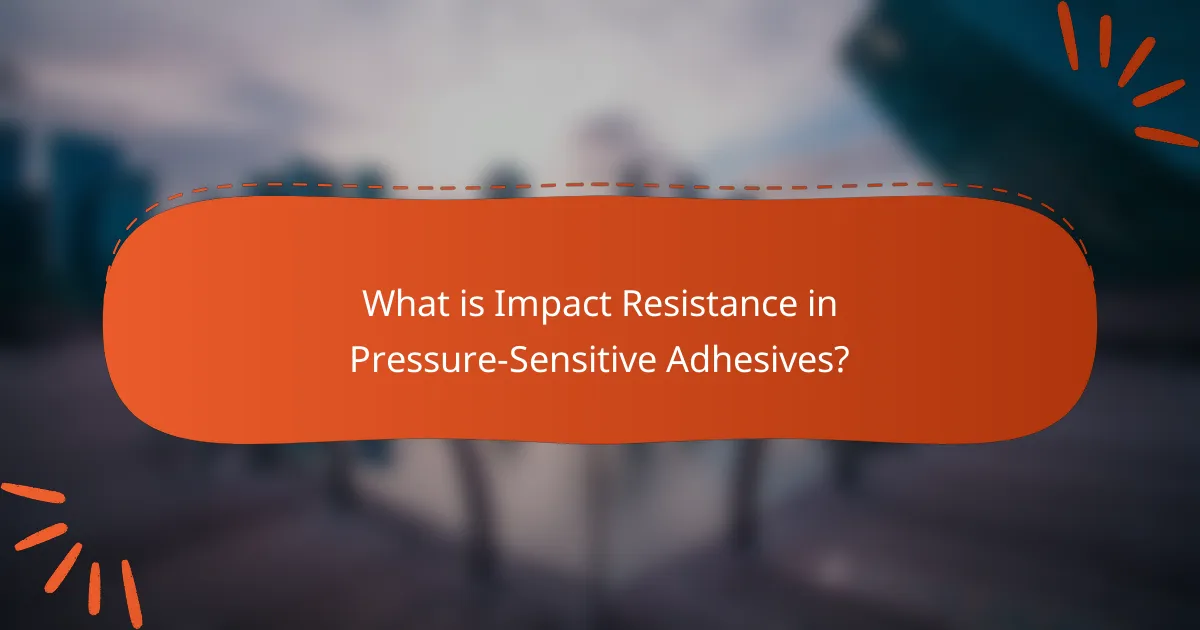
What is Impact Resistance in Pressure-Sensitive Adhesives?
Impact resistance in pressure-sensitive adhesives refers to the ability of the adhesive to withstand sudden forces or shocks without failing. This characteristic is crucial in applications where the adhesive bond may be subjected to dynamic loads. High impact resistance ensures that the adhesive maintains its bond under stress, preventing delamination or failure. Studies show that adhesives with enhanced impact resistance can absorb energy effectively, which is vital in industries like automotive and packaging. For instance, certain formulations of pressure-sensitive adhesives are designed to remain intact after repeated impacts, demonstrating their reliability in demanding environments.
How is Impact Resistance evaluated?
Impact resistance is evaluated through standardized testing methods. These methods typically include drop tests or impact tests using specific weights and heights. The objective is to measure how well a material can absorb energy during an impact. For instance, the ASTM D2794 standard outlines a method for testing the impact resistance of coatings. In this test, a weight is dropped from a predetermined height onto the material. The results indicate the material’s ability to withstand deformation or failure under impact conditions. The higher the energy absorption without damage, the better the impact resistance.
What testing methods are used for assessing Impact Resistance?
Common testing methods for assessing impact resistance include the Izod impact test and the Charpy impact test. The Izod test measures the energy absorbed by a material during fracture. It involves striking a notched specimen with a swinging pendulum. The Charpy test also assesses energy absorption but uses a different specimen shape and impact direction. Both tests provide quantitative data on material toughness. These methods are standardized by ASTM (American Society for Testing and Materials). They are widely used in various industries to ensure materials meet specific impact resistance requirements.
What factors affect the Impact Resistance of Pressure-Sensitive Adhesives?
The impact resistance of pressure-sensitive adhesives (PSAs) is affected by several factors. These include the adhesive’s formulation, which determines its molecular structure and properties. The choice of polymer used in the adhesive plays a critical role in impact resistance. Additionally, the presence of additives can enhance or reduce this property.
Environmental conditions, such as temperature and humidity, also influence the performance of PSAs under impact. The substrate to which the adhesive is applied affects how well it can absorb and dissipate impact forces. Finally, the thickness of the adhesive layer can impact its ability to withstand sudden forces.
Research indicates that optimizing these factors can significantly improve the impact resistance of PSAs, ensuring better performance in various applications.
Why does Impact Resistance matter?
Impact resistance matters because it determines how well a material can withstand sudden forces or shocks. High impact resistance in pressure-sensitive adhesives ensures durability and longevity. It prevents failure during applications involving dynamic stresses. For instance, adhesives used in automotive or aerospace industries require strong impact resistance to maintain structural integrity. Studies show that adhesives with superior impact resistance can enhance product performance and safety. This characteristic is crucial in applications exposed to vibrations or impacts. Thus, impact resistance directly influences the reliability and effectiveness of pressure-sensitive adhesives.
How does Impact Resistance influence application success?
Impact resistance directly influences application success by determining the durability of pressure-sensitive adhesives under stress. High impact resistance ensures that adhesives maintain their bond even when subjected to sudden forces. This characteristic is crucial in applications where materials may experience shocks or vibrations. For instance, in automotive or aerospace industries, adhesives must withstand harsh conditions without failing. Studies show that adhesives with superior impact resistance can reduce maintenance costs and improve product longevity. Therefore, the level of impact resistance is a key factor in evaluating the effectiveness and reliability of adhesive applications.
Which industries prioritize Impact Resistance in their adhesive choices?
The automotive, aerospace, construction, and electronics industries prioritize impact resistance in their adhesive choices. In the automotive industry, adhesives must withstand vibrations and impacts during operation. Aerospace applications require adhesives that can endure extreme conditions and impacts during flight. The construction industry often utilizes adhesives for structural applications that face environmental stresses. Electronics manufacturers need adhesives that protect components from shocks and impacts during use.
What are best practices for selecting Pressure-Sensitive Adhesives based on Peel Strength and Impact Resistance?
Select pressure-sensitive adhesives (PSAs) by evaluating their peel strength and impact resistance. Peel strength measures the adhesive’s ability to stick to surfaces under tension. High peel strength is essential for applications requiring strong bonds. Assess impact resistance to ensure the adhesive can withstand sudden forces without failure.
Conduct tests to determine the adhesive’s performance under specific conditions. Use standardized methods like ASTM D903 for peel strength evaluation. For impact resistance, consider tests such as ASTM D2794.
Choose adhesives with documented performance data for your application. Look for manufacturers providing technical data sheets. These sheets should include test results and performance metrics. This ensures the selected adhesive meets your specific requirements for durability and reliability.
Pressure-sensitive adhesives (PSAs) are bonding agents that adhere to surfaces with light pressure, eliminating the need for heat or solvents. This article provides a detailed examination of the critical attributes of PSAs, specifically focusing on peel strength and impact resistance, which are essential for evaluating adhesive performance in various applications. It discusses the components that influence these properties, the different types of PSAs available, and the industries that prioritize these metrics for product reliability. Additionally, standardized testing methods for measuring peel strength and impact resistance are outlined, along with best practices for selecting appropriate adhesives based on these characteristics.
